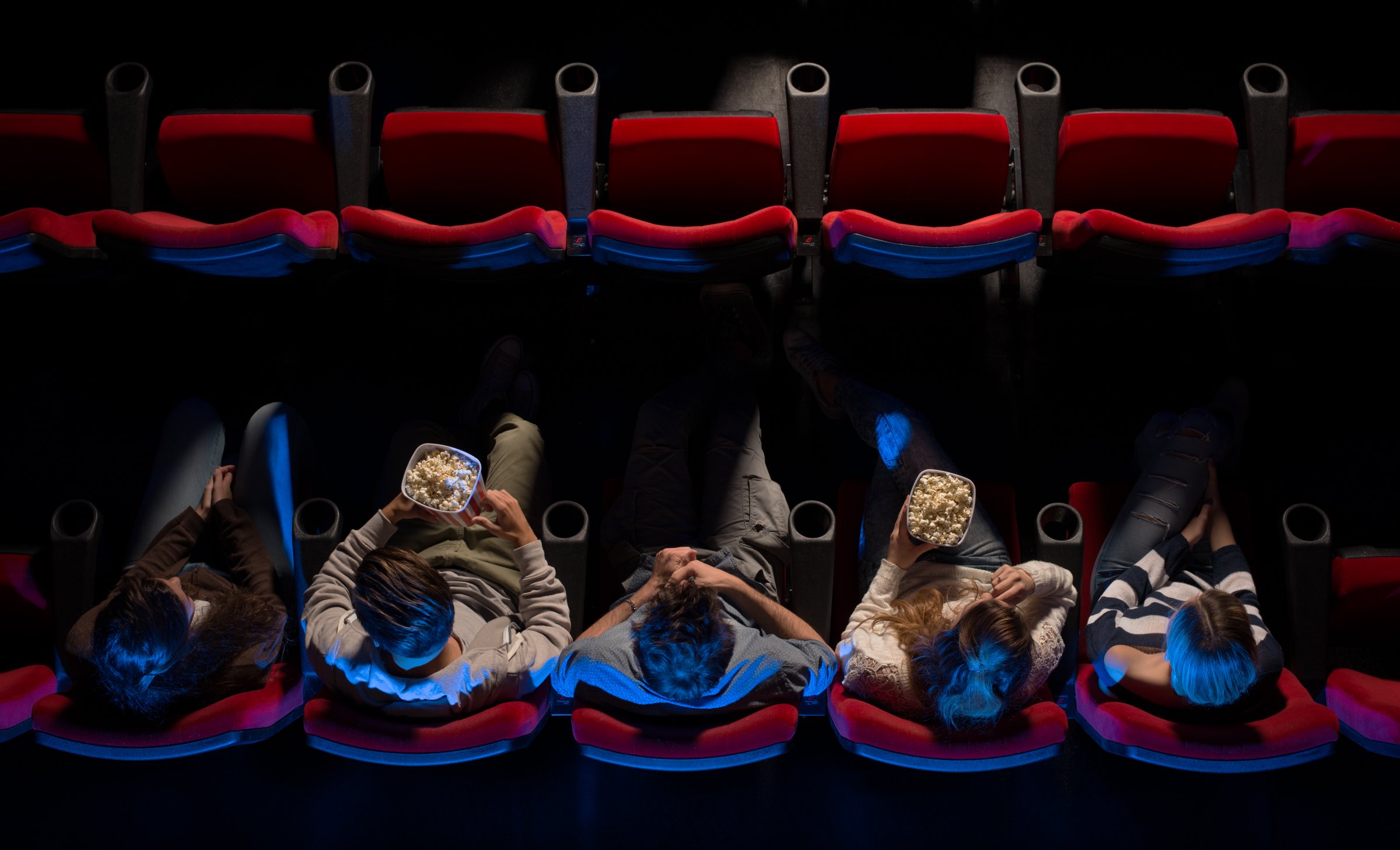
I’d heard great things about dine-in movie theaters, so I was thrilled when my friend booked us tickets to see Barbie at the local Alamo Drafthouse, a chain that’s conquered the dinner-and-a-show market. At 8:15, as I settled into my reclining seat, I ordered a light meal. But when it arrived after the previews, all I wanted was more. I hadn’t been that hungry, but as I munched, I felt that no amount of popcorn in the world could satisfy me.
Often, we eat the way the world around us tells us to—environmental cues help us decide when, how much, and what to chow on. And the dark, cool uniformity of movie theaters make them some of the most manufactured sensory environments we eat in.
Dine-in theaters are often marketed as a cross between a restaurant and a cinema, but in practice, they end up serving fairly different instincts. Foods we crave in a restaurant may have little appeal in a movie theater, while a tub of popcorn—a monotonous meal in any other setting— is endlessly satisfying. As it turns out, there are a lot of psychological effects at play when you enter a theater, and they reveal a lot about the interplay between food and our surroundings.
Turning down the lights
There are good reasons that upscale restaurants almost uniformly use lower lighting, and it makes sense that this darkness, replicated in movie theaters, encourages us to eat more. Most of it is in the mood. “When we lower the lighting, we're more relaxed, which usually increases satisfaction in general with your overall experience,” says Sarah Lefebvre, an associate professor of marketing at Murray State University. “We're gonna probably consume a little more because A, we’re not really paying attention, and B, we don't really care.”
Dim light doesn’t just encourage us to eat more—it also affects what we choose to eat. Low light at restaurants has been found to make people reach for more indulgent choices, like replacing a side salad with fries or sticking around for dessert. At the movie theater, where we’re also distracted by the story playing out in front of us, this lack of attention is even more pronounced, which could help explain where all that popcorn goes.
Read More: The Underrated Bliss of Sitting in the Front Row at Movie Theaters
Light even affects what your food tastes like, or which flavors you’re more likely to reach for. Lefebvre herself has studied what she calls “sensory compensation,” or the idea that depriving one sense can heighten another. In a 2022 study, she found that in a dim room, foods with just one dimension of taste, such as sweet or salt (like popcorn) actually taste better than they do in light. Add in a second element of flavor, however (like M&Ms poured into popcorn), and the difference between light and dark is gone.
Taste can also suffer from lack of light, especially if you’re eating, say, a dine-in theater entree rather than a more uniform snack. “We eat with our eyes,” Lefebvre says. A visually stimulating plate of varied foods just might not satisfy the same way through taste and texture alone.
Other environmental factors are at play, too, like the chilly air in movie theaters. Cold makes us want to eat more, says Lefebvre, particularly when we start to shiver. Shivering uses up valuable energy stores, she says, which causes the brain to send out signals in search of more calories.
What's on the screen matters
Theaters may be consistent, but movies themselves are anything but, and that variation can shape the appetites of those watching. The actions of movie characters—particularly when they’re eating—create patterns in the way an audience eats, says Vivien Shuo Zhou, an associate professor of communications studies at Hong Kong Baptist University. Watching movies is a “vicarious experience,” she says. Often, when characters eat onscreen, the audience digs in as well. But there’s a key caveat: “This effect is only observed among people who identify with the movie characters,” Zhuo says. Watching a movie is an immersive experience that requires some level of buy-in, of willingness to be transported into the story. Eating is a goal-related behavior, Zhuo says, and when we care about a character, we subconsciously adopt their goals as our own.
Some dine-in theaters harness induced cravings more literally by featuring special menu items or discounts that align thematically with the specific foods shown in a film. For example, when Alamo Drafthouse shows Teenage Mutant Ninja Turtle films, they sell a lot more pizza, famously a favorite food of the reptilian foursome, says Kristen Wheaton, vice president of guest experience at the chain.
And then, of course, there’s dessert. According to Zhou, there’s one beat in any movie that’s most likely to have audiences reaching for a handful of chocolate over a handful of popcorn. In a 2017 study where sweet and salty snacks were left out throughout scenes of people eating, viewers gravitated toward sweets toward the end. “We found that when people are exposed to a scene where eating is being completed, they tend to choose M&M’s more,” she says. That’s good news for Alamo’s dessert menu.
More Must-Reads from TIME
- How Donald Trump Won
- The Best Inventions of 2024
- Why Sleep Is the Key to Living Longer
- Robert Zemeckis Just Wants to Move You
- How to Break 8 Toxic Communication Habits
- Nicola Coughlan Bet on Herself—And Won
- Why Vinegar Is So Good for You
- Meet TIME's Newest Class of Next Generation Leaders
Contact us at letters@time.com